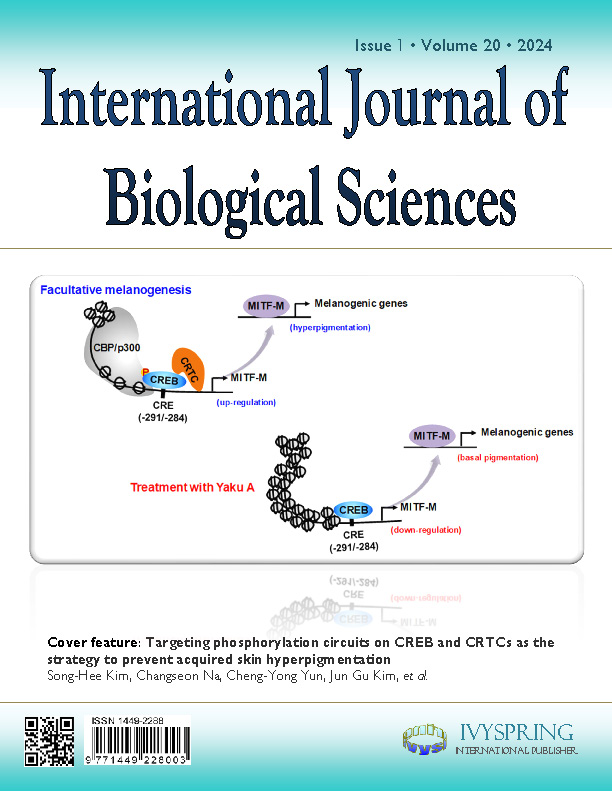通过化学蛋白组学和代谢组学的联合解旋策略剖析 Celastrol 诱导肾毒性的靶向分子机制
IF 8.2
2区 生物学
Q1 BIOCHEMISTRY & MOLECULAR BIOLOGY
引用次数: 0
摘要
Celastrol (Cel) 提取自传统草药 Tripterygium wilfordii Hook.f.,具有抗炎、抗肿瘤和免疫调节活性。有报告称,服用 Cel 相关药物的患者会出现肾功能障碍,包括急性肾衰竭。然而,Cel 引起肾毒性的功能机制尚不清楚。本研究结合使用基于活性的蛋白质分析和代谢组学分析来区分 Cel 肾毒性作用的靶点。结果表明,Cel 可能直接与参与新陈代谢和线粒体功能的几种关键酶结合。这些酶包括电压依赖性阴离子选择性通道蛋白1(对维持线粒体构型和功能稳定性至关重要)、丙酮酸羧化酶(参与糖异构化和三羧酸循环)、脂肪酸合成酶(与脂肪酸的β-氧化有关)和丙酮酸激酶M2(与有氧呼吸有关)。蛋白质组学和代谢组学分析证实,Cel靶向蛋白破坏了一些代谢生物合成过程,并促进线粒体功能障碍。最终,Cel 加剧了肾细胞凋亡。这些累积的结果使人们对 Cel 导致肾毒性的潜在机制有了深入的了解。它们还有助于开发拮抗药物,以减轻 Cel 对肾脏的有害影响并改善其临床应用。本文章由计算机程序翻译,如有差异,请以英文原文为准。
Dissection of Targeting Molecular Mechanisms of Celastrol-induced Nephrotoxicity via A Combined Deconvolution Strategy of Chemoproteomics and Metabolomics
Celastrol (Cel), derived from the traditional herb Tripterygium wilfordii Hook. f., has anti-inflammatory, anti-tumor, and immunoregulatory activities. Renal dysfunction, including acute renal failure, has been reported in patients following the administration of Cel-relative medications. However, the functional mechanism of nephrotoxicity caused by Cel is unknown. This study featured combined use of activity-based protein profiling and metabolomics analysis to distinguish the targets of the nephrotoxic effects of Cel. Results suggest that Cel may bind directly to several critical enzymes participating in metabolism and mitochondrial functions. These enzymes include voltage-dependent anion-selective channel protein 1 (essential for maintaining mitochondrial configurational and functional stability), pyruvate carboxylase (involved in sugar isomerization and the tricarboxylic acid cycle), fatty acid synthase (related to β-oxidation of fatty acids), and pyruvate kinase M2 (associated with aerobic respiration). Proteomics and metabolomics analysis confirmed that Cel-targeted proteins disrupt some metabolic biosynthetic processes and promote mitochondrial dysfunction. Ultimately, Cel aggravated kidney cell apoptosis. These cumulative results deliver an insight into the potential mechanisms of Cel-caused nephrotoxicity. They may also facilitate development of antagonistic drugs to mitigate the harmful effects of Cel on the kidneys and improve its clinical applications.
求助全文
通过发布文献求助,成功后即可免费获取论文全文。
去求助
来源期刊

International Journal of Biological Sciences
生物-生化与分子生物学
CiteScore
16.90
自引率
1.10%
发文量
413
审稿时长
1 months
期刊介绍:
The International Journal of Biological Sciences is a peer-reviewed, open-access scientific journal published by Ivyspring International Publisher. It dedicates itself to publishing original articles, reviews, and short research communications across all domains of biological sciences.
 求助内容:
求助内容: 应助结果提醒方式:
应助结果提醒方式:


